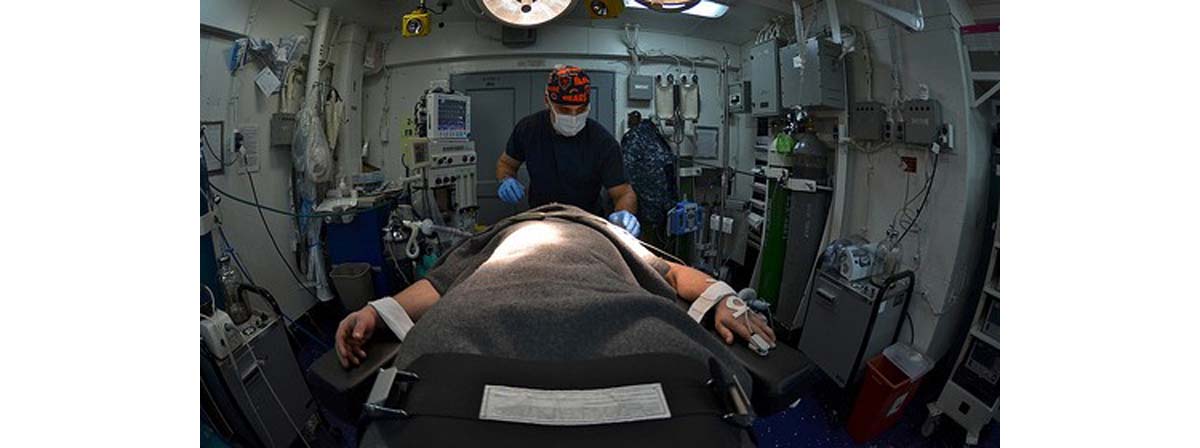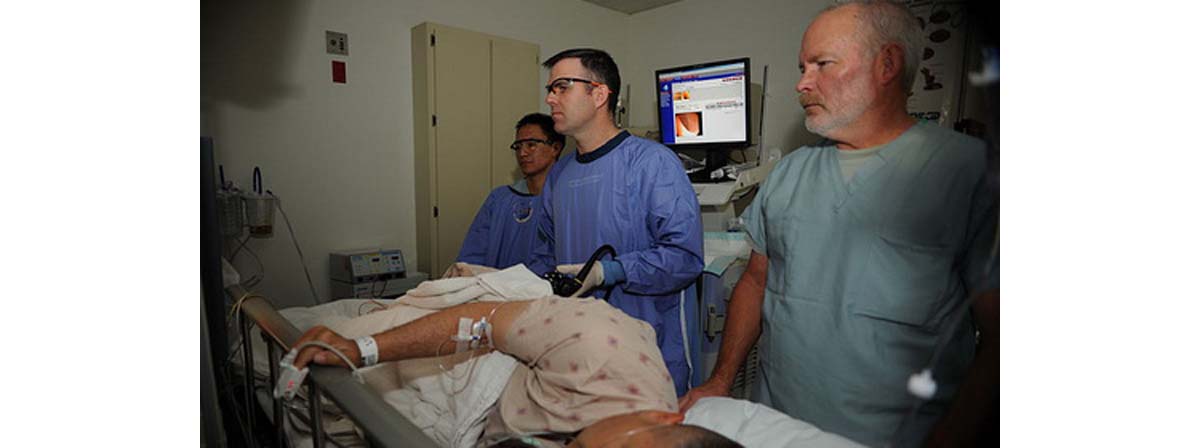In the United States, about 1 in 16 people eventually develops colon polyps and then colon cancer. This form of cancer is uniquely treatable in its earliest stages. When potential cancers are detected in the polyp stage, a fairly easy "snip" is often all that is needed to ensure completely effective treatment. Colon cancers cannot be treated, however, until they are detected. And the method used to detect colon polyps and colon cancer is colonoscopy.

A colonoscopy is a visual inspection of the bowel with a specially designed camera on the end of a flexible tube (called an endoscope) inserted by a doctor into the rectum. Patients prepare to undergo a colonoscopy by drinking large amounts of laxatives, up to 2 gallons (8 liters) of a mixture of water and magnesium citrate. Available without a prescription, products with trade names like LiquiPrep or Miralax are mixed up at home and taken at least 24 hours before the procedure, with the objective of encouraging complete evacuation of the bowel so the doctor can clearly see its lining. It is also important to avoid solid food for 2 days before the procedure, as well as semi-solid food that could be mistaken for a lesion in the lining of the colon itself.
Colonoscopy: A Painless Procedure?
Very few colonoscopy patients complain about any part of the procedure other than the prep at home, which can require countless trips to the bathroom. Most people don't complain about the procedure afterwards because they don't remember it. That is because they are sedated during the procedure.
In the United States, most people receiving colonoscopy exams are sedated with a drug called propofol. This medication is infamous as the drug that was misprescribed to pop star Michael Jackson, resulting in his death. The advantage of propofol for patients is that it is cleared out of the body quickly after the procedure is over, although it provides no pain relief. The advantage of propofol for the gastroenterologist is that patients who are given the drug are able to cooperate with the procedure, turning or moving body position to accommodate the tube being inserted up their behinds, but they have no memory of the events a few hours later. It's not anesthesia, but because you don't remember the colonoscopy, it's essentially the illusion of anesthesia.
Propofol Makes Colonoscopy Easier, At Least for the Doctor
Patients given propofol have to be closely monitored by an anesthesiologist, but, despite the tragic Michael Jackson case, complications are relatively rare. Propofol is a lot safer than the older combination of sedative drugs that were once commonly given before colonoscopy, such as benzodiazepine tranquilizers with narcotics.
So, when doctors and nurses have their own colonoscopies, they are OK with getting a shot of propofol, right? Two doctors conducted a survey of 451 gastroenterologists and 460 colonoscopy nurses to find out if that was actually true.
What Doctors and Nurses Choose for Their Own Colonoscopy Care
Dr. Deepak Agrawal, a professor medicine at the division of digestive and liver diseases at University of Texas Southwestern Medical Center in Dallas and Dr. Don Rockey, who is chairman of the department of medicine at the Medical University of South Carolina in Charleston, approached doctors and nurses who do colonoscopies with three questions.

The questions the doctors and nurses were asked during the survey were:
- If you were having a colonoscopy for screening purposes, which kind of anesthesia would you prefer — propofol (deep sedation), a combination of midazolam and fentanyl (moderate sedation), or no anesthesia at all?
- If you had to pay for your own procedure, how much more would you be willing to pay to be given propofol? The actual additional cost of getting propofol sedation is about $1000 to $2000 in most hospitals and clinics. Doctors and nurses in the survey were given the option of paying nothing, stated amounts up to $500, or "it doesn't matter" (that is, "I want it no matter what it's going to cost me").
- If you prefer treatment with propofol, what are the reasons for your choice? Possible reasons for preferring propofol include not remembering anything about the event, having an additional doctor on the team, and shorter recovery time. (People who are given propofol spend about 20 minutes less in the recovery room than people who are given the older combination of midazolam and fentanyl, although discharge instructions are the same no matter which medication is used.)
Most of the 911 doctors and nurses Rockey and Agrawal surveyed reported that, for themselves, they wanted to be given propofol when they had their own colonoscopies. The most common reason given for preferring propofol is not having any memories of the event. During the procedure with propofol, the patient is actually awake, but there will usually be no conscious memory of anything that happened in the colonoscopy room. Any unpleasantness in the procedure is forgotten as soon as the procedure is over.
Doctors and nurses were not willing, however, to pay more than $200 of their own money for the procedure. That is, they thought propofol was a good idea, but it was not worth much more than 10% of what their clinics and hospitals charged, especially since the cost of the anesthesiologist is considerably greater than the cost of the time plus the cost of the procedure itself.
What about alternative medical procedures? Most other ways of examining the colon for early detection of cancer are far more expensive and really don't work nearly as well:
- "Virtual colonoscopy" still requires insertion of a tube up the rectum, typically with little or no sedation. It can't detect smaller tumors as well as the regular colonoscopy procedure, and it is primarily used for staging known cancerous tumors, in other words seeing how advanced they are. More people complain about pain from virtual colonoscopy than the older procedure.
- Color capsule endoscopy, accomplished by swallowing a capsule containing a wireless video camera that transmits images to wearable recording device, is used for inspecting the small intestine. Conventional colonoscopy is used to examine the large intestine, also known as the colon.
- "High def" colonoscopy can detect tumors that white-light colonoscopy does not. It is deployed the same way as a conventional colonoscopy.
Anesthesia Prevents Pain, Sedation Prevents Memories
If your insurance plan covers the cost of any kind of colonoscopy, you may be interested in whatever technique helps you get home faster and remember less. But if you are paying for the procedure out of pocket, be sure to ask about your sedation options before you go in, including the cost.
Regardless of the sedation or anesthetic technique used, do your best to remember that colonoscopy plays a key role in detecting a cancer that can — in the case of early diagnosis — be cured effectively in many cases. Nobody likes the thought of a colonoscopy, and you definitely wouldn't want to go through one without any sedation, but the procedure is there to potentially safe your life. That's worth a lot!
- Agrawal D, Rockey DC. Propofol for Screening Colonoscopy in Low-Risk Patients: Are We Paying Too Much? JAMA Intern Med. 2013 Jul 15. doi: 10.1001/jamainternmed.2013.8417.
- Flemming JA, Vanner SJ, Hookey LC. Split-dose picosulfate, magnesium oxide, and citric acid solution markedly enhances colon cleansing before colonoscopy: a randomized, controlled trial. Gastrointest Endosc. Mar 2012/ 75(3):537-44.
- Photo courtesy of Official U.S. Navy Page by Flickr : www.flickr.com/photos/usnavy/6727251829/
- Photo courtesy of United States Navy by Wikimedia Commons : commons.wikimedia.org/wiki/File:US_Navy_110405-N-KA543-028_Hospitalman_Urian_D._Thompson,_left,_Lt._Cmdr._Eric_A._Lavery_and_Registered_Nurse_Steven_Cherry_review_the_monitor_whil.jpg

